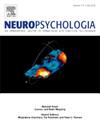Linking behavioral deficits with underlying neural property changes in amblyopia
IF 2
3区 心理学
Q3 BEHAVIORAL SCIENCES
引用次数: 0
Abstract
While it is widely accepted that abnormal visual experience during critical period can lead to significant functional deficits and altered neural property, the quantitative link between behavioral visual losses and underlying neural changes remains elusive. To address this gap, we systematically varied stimulus orientation and contrast to measure 2D psychometric functions of amblyopic and normally sighted participants at two different spatial frequencies. A biologically-interpretable neural population model explicitly incorporated with neural contrast response function (CRF) and orientation tuning property accounted for the complex performance data for both groups. Our results revealed that the poor performance in the amblyopic group can be excellently explained by a rightward-shifted CRF at higher spatial frequency and reduced population Fisher information for coding orientation. Moreover, regression analysis revealed that the behavior contrast threshold from an independent measurement significantly depended on the neural properties estimated by the model. This study demonstrates the potential of biologically-interpretable models to quantitatively bridge the gap between behavioral deficits and underlying neural changes, offering a promising tool for understanding normal and abnormal visual systems.
弱视的行为缺陷与潜在神经特性改变的联系
虽然人们普遍认为,关键时期的异常视觉经验可导致严重的功能缺陷和神经特性改变,但行为性视觉丧失与潜在的神经变化之间的定量联系尚不明确。为了解决这一差距,我们系统地改变了刺激方向和对比度,以测量弱视和正常视力参与者在两个不同空间频率下的二维心理测量功能。一个生物可解释的神经群体模型明确结合了神经对比响应函数(CRF)和方向调谐特性,解释了两组复杂的性能数据。我们的研究结果表明,弱视组的较差表现可以很好地解释为在更高的空间频率下向右移动的CRF和编码方向上减少的群体Fisher信息。此外,回归分析表明,独立测量的行为对比阈值显著依赖于模型估计的神经特性。这项研究证明了生物可解释模型的潜力,可以定量地弥合行为缺陷和潜在神经变化之间的差距,为理解正常和异常的视觉系统提供了一个有前途的工具。
本文章由计算机程序翻译,如有差异,请以英文原文为准。
求助全文
约1分钟内获得全文
求助全文
来源期刊

Neuropsychologia
医学-行为科学
CiteScore
5.10
自引率
3.80%
发文量
228
审稿时长
4 months
期刊介绍:
Neuropsychologia is an international interdisciplinary journal devoted to experimental and theoretical contributions that advance understanding of human cognition and behavior from a neuroscience perspective. The journal will consider for publication studies that link brain function with cognitive processes, including attention and awareness, action and motor control, executive functions and cognitive control, memory, language, and emotion and social cognition.
 求助内容:
求助内容: 应助结果提醒方式:
应助结果提醒方式:


